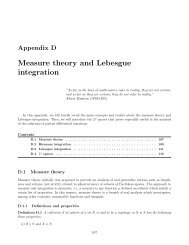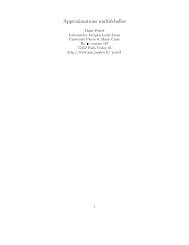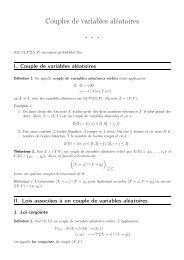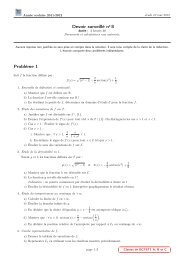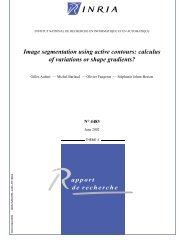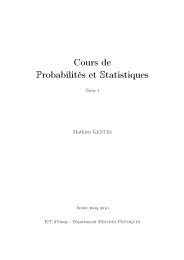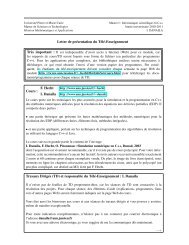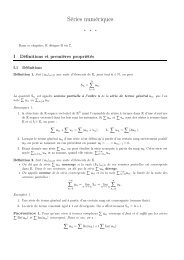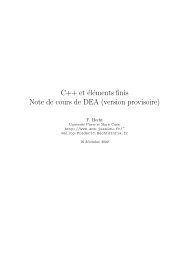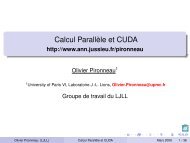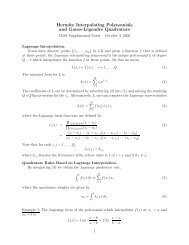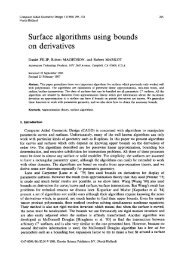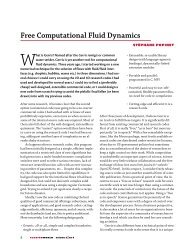Anisotropic Delaunay Mesh Adaptation for Unsteady Simulations
Anisotropic Delaunay Mesh Adaptation for Unsteady Simulations
Anisotropic Delaunay Mesh Adaptation for Unsteady Simulations
Create successful ePaper yourself
Turn your PDF publications into a flip-book with our unique Google optimized e-Paper software.
190 C. Dobrzynski and P. Frey<br />
Fig. 1. Initial surface-adapted mesh (left), cut though the final adapted mesh (middle)<br />
and local enlargment (right)<br />
Fig. 2. Example of mesh adaptation to capture an implicitly defined surface: cutting<br />
plane through tetrahedral elements (left) and isosurface reconstruction (right)<br />
is high in the vicinity of the isosurface so as to minimize the piecewise affine<br />
approximation of this interface. To this end, we defined the following metric<br />
tensor at the vertices of all mesh elements intersected by the manifold:<br />
⎛<br />
⎞<br />
M = R ⎝ 1/ε2 0 0<br />
0 |λ 2 |/ε 0 ⎠ t R,<br />
0 0 |λ 3 |/ε<br />
with R = ( ∇uv1 v2 ) ,where (v 1 ,v 2 )is a basis of the tangent plane to the<br />
surface and λ i are the eigenvalues of the Hessian of u. Atall other vertices, we<br />
define the metric αI 3 with α ∈ R + .Weconsider the analytical surface defined in<br />
spherical coordinates as: r =0.45+0.3 sin(3φ), with θ ∈ [0; 2π] and φ ∈ [− π 2 ; π 2 ].<br />
We started from an initial uni<strong>for</strong>m mesh of size h =0.2 (Figure 2). The final<br />
mesh after 8 iterationscontains 10 5 vertices <strong>for</strong> a minimal elementsize h = 10 −3 .<br />
The approximation error in the L ∞ norm between the surface and its piecewise<br />
affine discretization is lesser than 10 −4 .



